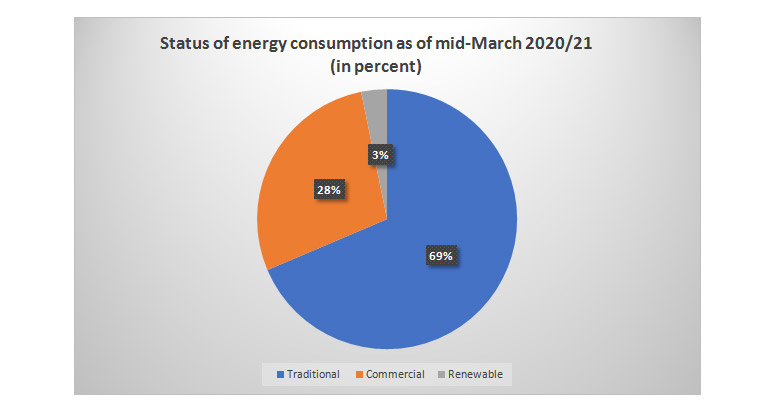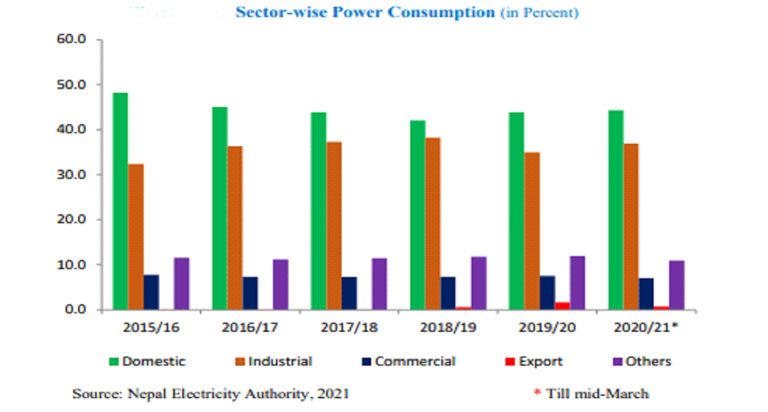Hydropower is the oldest and largest sources of renewable energy which uses the natural flow of moving water to generate electricity. In developing country like Nepal, it is supposed to solve the electricity issue as Nepal is the lowest energy consumption country globally. Water flows through the dam spin turbine blades (made from metal instead of leaves) which are connected to generators. Power is produced and is sent to homes and business.
As per the information on Investment Board Nepal, several projects are under implementation. Some of the hydropower projects are Arun3 Hydropower and Upper Karnali Hydropower. Arun 3 hydropower project is being implemented in Sankhuwasabha. Its transmission will be covering Sankhuwasabha, Bhojpur, Khotang, Udaypur, Siraha, Dhanusa, Mahottari. The total cost for this project is Rs. 144 billion. The capacity of Arun3 hydropower project is 900 MW. The transmission will be connecting to Muzzafarpur, India. Similarly, another project is Upper Karnali Hydropower Project which is located in Achham, Dailekh, Surkhet. The developer of this project is GMR Ltd. The total cost for this project is Rs. 116 billion. The transmission ranges to 100 km connecting Bareli, India.
Source:
https://ibn.gov.np/
A joint technical team representing Nepal and India has started a feasibility study for the construction of a high dam on the Saptakoshi River which will provide year-round irrigation facility to a dozen districts from Jhapa to Parsa. The ambitious multibillion-dollar project will provide irrigation, control floods and generate 3000 MW of electricity. The Saptakoshi River has seven tributaries and is one of the biggest rivers in Nepal.
Pancheshwar Multipurpose Project (PMP) is a bi-national hydropower project to be developed in Mahakali River bordering Nepal and India. Development of PMP, is a mutual interest project between two countries, and is covered under integrated Mahakali Treaty signed between Nepal and India according to which, equal sizes of underground power house i.e., of 3240 MV will be constructed on each side of Mahakali River in India and Nepal. Moreover, the PMP also offer benefit of regulated water for irrigation to a vast area of agricultural land both in Nepal and India along with benefit of flood control at downstream.
Source:
http://www.pmp.gov.np/
Budhiganga Hydropower Project aims at contributing to the social and economic development of Nepal through electricity generation capacity of the country which will help to meet the load demand and reduce the load shedding by developing the Budhi Ganga Hydroelectric Power Project. The Project is a peaking run-of-river type that lies within the Achham and Bajura districts on the Budhi Ganga River, a major tributary to the Seti River and is located in the Far Western Development Region approximately 890 km west of the capital Kathmandu.
Source:
http://www.bhp.gov.np/
Moreover, the studies projects under Department of Electricity Development are Bheri Khola, Dotigad, Jawa Khola, Loti Karnali, Lower Chepe Khola HPP, Lungri Khola, Maiwa Khola, Mustang Wind Power, Myagdi Khola, Nyauriga and Rupagad HPP. The total capacity for these 11 projects is 1,28,504 MW.
Hydropower Projects Completed by mid-March FY 2020/21
| Project |
Capacity (KW) |
Place |
Promoter |
| Sunkoshi "A" Hadi Khola |
997 |
Sindhupalchok |
Century Energy Pvt.Ltd |
| Upper Rawa |
3000 |
Khotang |
Rawa Energy Development Pvt. Ltd |
| Namarjun Madi |
11880 |
Kaski |
Himalayan Hydropower |
| Butwal Solar |
8500 |
Rupandehi |
Riddhi Hydropower |
| Ghante Khola |
5000 |
Dolakha |
Manakamana Engineering Pvt. Ltd |
| Everest Sugar and Chemical Industries |
3000 |
Mahottari |
Everest Sugar and Chemical Industries |
| Bijayapur khola 2 (Small Hydropower) |
4500 |
Kaski |
Civil Hydropower Pvt. Ltd |
| Mithila Solar Hydropower |
10000 |
Dhanusa |
Eco Power Development Company Pvt. Ltd |
| Grid Solar Plant |
10000 |
Nuwakot |
Nepal Electricity Authority Company Pvt. Ltd |
| TOTAL |
56877 |
|
|
Source: Nepal Electricity Authority, 2021
The Roadmap for Energy Development has been implemented by declaring the Energy and Water Resources Decade (2018 - 2028) with the objective of contributing to fulfill the national aspirations of 'prosperous Nepal and happy Nepali' through the development of energy sector. As per the government policy to encourage the production and use of electricity, the production and consumption of electricity is increasing. The access to electricity of the population has reached 93.0 percent with the increase of the electricity production. As of mid-July 2020, the access to electricity was 90.0 percent of the population.
Details of Province-wise Access to Electricity
| Province |
2019/20 |
2020/2021 |
| 1 |
86.30 |
82.43 |
| Madhesh |
87.25 |
99.05 |
| Bagmati |
95.83 |
94.44 |
| Gandaki |
87.48 |
92.79 |
| Lumbini |
89.07 |
91.00 |
| Karnali |
27.74 |
34.75 |
| Far West |
67.33 |
64.69 |
| Population having access to alternative energy 3.0 percent |
| Nepal (Including Alternative Energy) |
90 |
93 |
Source: Nepal Electricity Authority, 2021 *Till mid-March
As of mid-March 2021, about 3.18 percent of the total population has access to electricity from renewable energy sources. The percentage of the population using clean renewable energy for various purposes has reached 36.0 percent. Similarly, in mid-2021, 801 kilowatts of electricity have been generated from micro and small hydropower projects under alternative energy. In fiscal year 2019/20, such projects had generated 870 kilowatts. Likewise, as of mid-March of fiscal year 2020/21, 250 kilowatts of electricity have been generated from solar and wind energy. In fiscal year 2019/20, electricity generated from solar and wind energy was 50 kilowatts. Moreover, 2,255 biogas plants and 6,329 solar households power system have been installed. In fiscal year 2019/20, 1,766 biogas plants, 29,816 solar household power systems and 13,455 improved stoves were installed in mid-2021.
As of mid-March, of fiscal year 2020/21, the ratio of conventional, commercial and renewable energy consumption to total energy consumption has been 68.6 percent, 28.2 percent and 3.2 percent, respectively. In fiscal year 2019/20, the ratio of conventional, commercial and renewable energy consumption to total energy consumption was 68.7 percent, 28.1 percent and 3.2 percent, respectively.

Source: Ministry of Energy, Water Resource and Irrigation, 2021
The total energy consumption of the all sectors of the economy has increased by 2.04 percent to 4779.64 gigawatt hours in mid-March of 2021 as compared to 46683.23 gigawatt hours of the corresponding period of mid-March 2020.
Sector-wise Power Consumption
| |
By mid-March (Gigawatt hours) |
| Sector |
2019/20 |
2020/2021 |
| Domestic |
2029.06 |
2119.38 |
| Industrial |
1697.87 |
1765.17 |
| Commercial |
371.75 |
338.43 |
| Export |
1.62 |
33.85 |
| Others |
582.93 |
522.81 |
Source: Ministry of Energy, Water Resources and Irrigation, 2021
As of mid-March, of fiscal year 2020/21, in view of the actual electricity consumption, the annual average consumption of electricity in domestic, industrial, commercial and other sectors has been 45.0 percent, 37.0 percent, 7.0 percent and 11.0 percent, respectively.

As per the government policy to encourage the production and use of electricity, the production and consumption of electricity is increasing. The access to electricity of the population has reached 93.0 percent with the increase of the electricity production. As of mid-July 2020, the access to electricity was 90.0 percent of the population
Key Words
• Roadmap for energy development
• Power Consumption
• Access to electricity
• Energy Consumption










